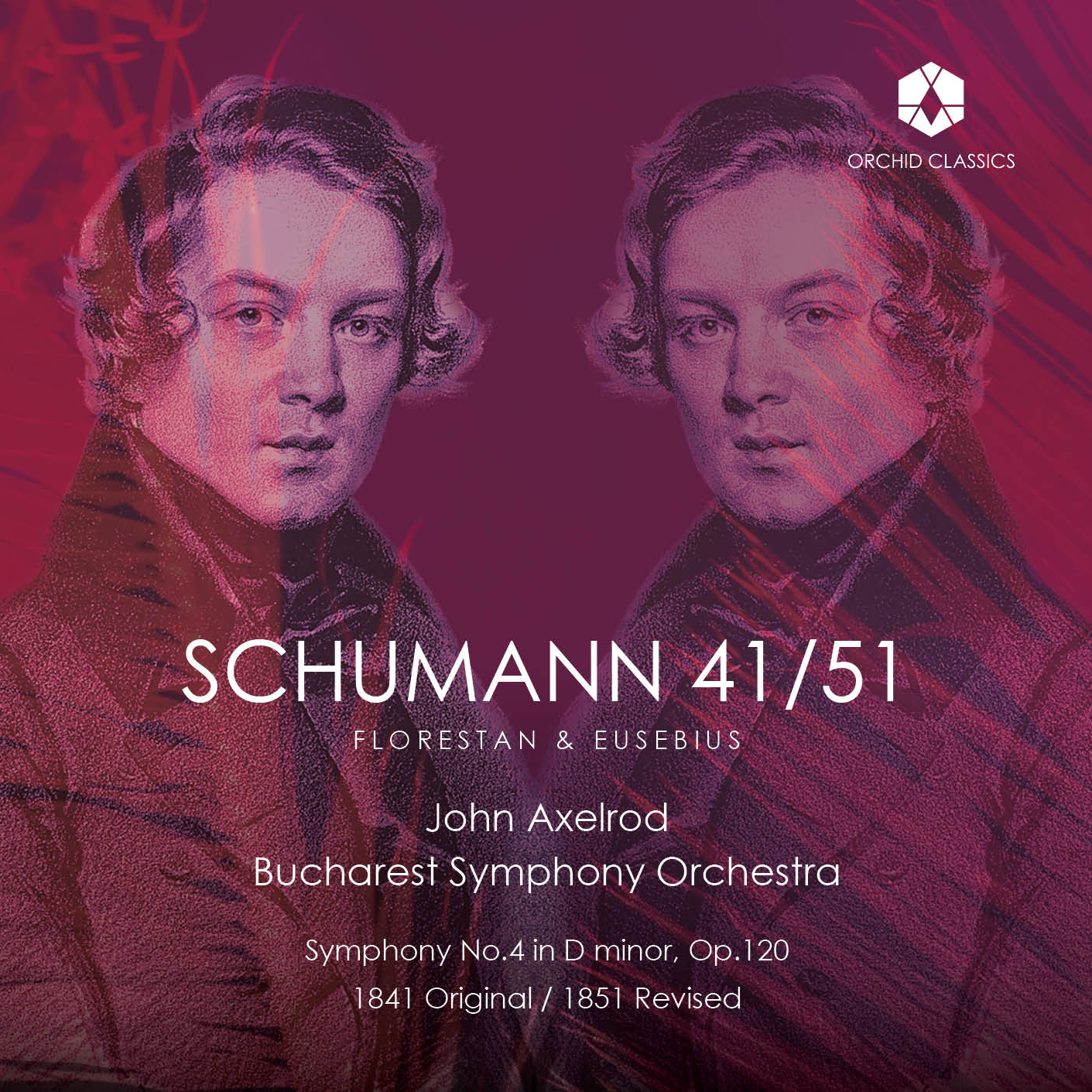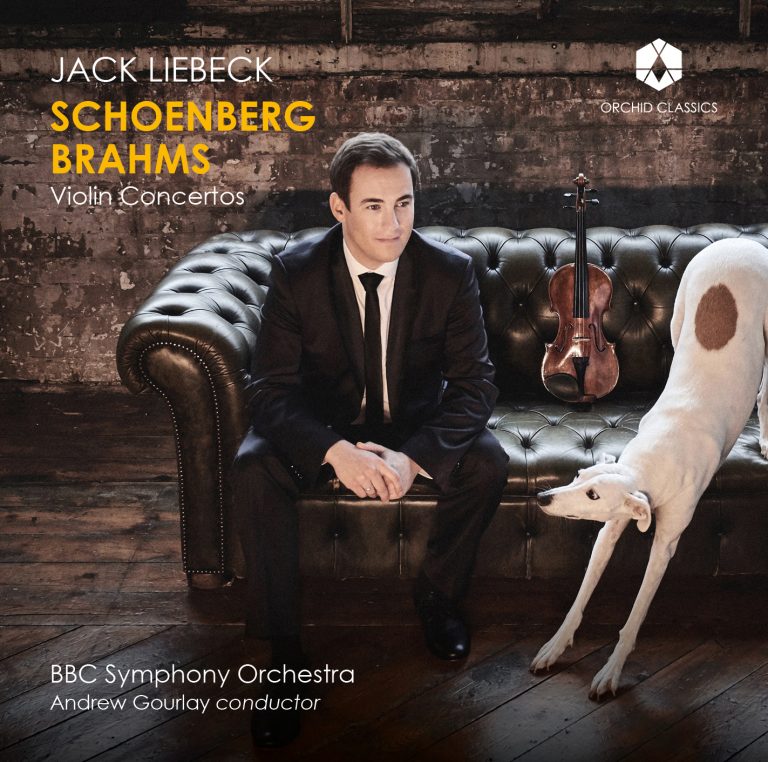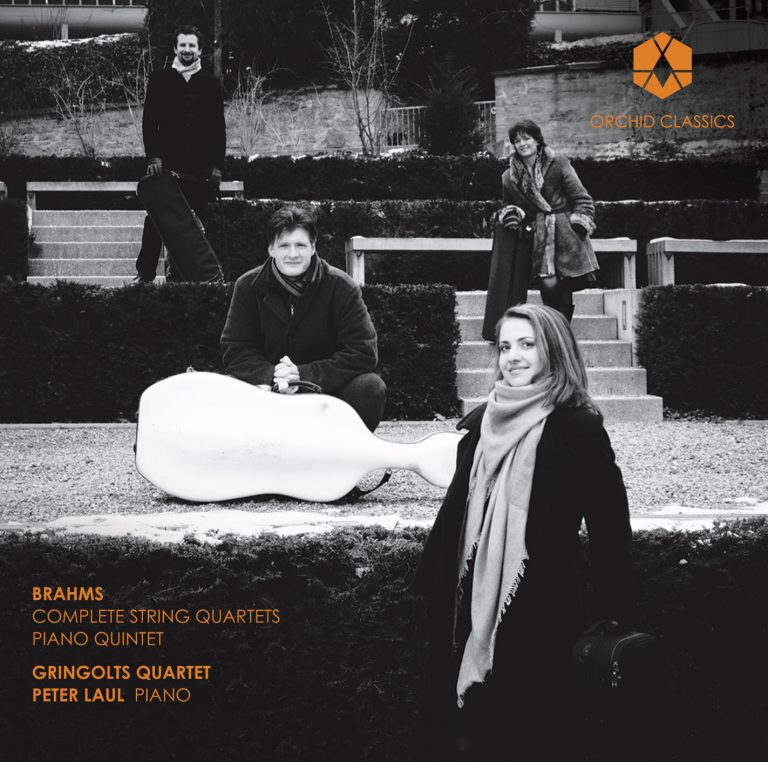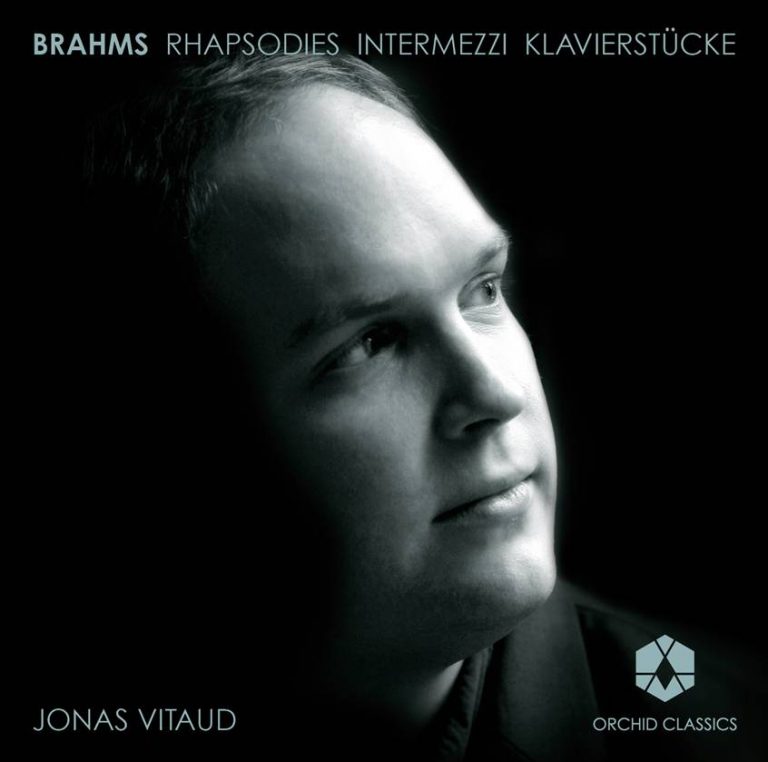Artist Led, Creatively Driven

Schumann 41/51
Florestan & Eusebius
John Axelrod
Bucharest Symphony Orchestra
Release Date: September 22nd
ORC100257
SCHUMANN 41/51: “FLORESTAN THE WILD” AND “EUSEBIUS THE MILD”
Robert Schumann (1810-1856)
Symphony No.4 in D minor, Op.120
Original version (1841)
1. I Andante con moto – Allegro di molto
2. II Romanza: Andante
3. III Scherzo: Presto
4. IV Largo – Finale. Allegro vivace
Revised version (1851)
5. I Ziemlich langsam – Lebhaft
6. II Romanze: Ziemlich langsam
7. III Scherzo: Lebhaft
8. IV Langsam – Lebhaft
Bucharest Symphony Orchestra
John Axelrod, conductor
ONE COMPOSER. ONE SYMPHONY. TWO VERSIONS.
What are the particularities of Schumann’s 1841 1st version versus the 1851 revised version of the Fourth Symphony?
The 1851 version is a revision of the original 1841 symphony in D minor, composed during what was Schumann’s “Year of the Symphony”. This was another productive and manic year after his “Year of the Song”, full of professional compositions, including his 1st symphony “Spring” amongst other works, as well as personal celebration: the birth of his daughter and the 1-year anniversary of his marriage to Clara Schumann, born Clara Wieck. What is important to understand with both versions is the narratology that Schumann intended, for the work to be performed without pauses between the movements, and to portray through music a narrative or story.
What is the story? Robert and Clara’s romance and their struggle to marry. Indeed, it is a classic love story. The 1st and last movements are considered public movements, setting the structure for the emotional challenge to marry over the objection and legal process of Clara’s father, Friedrich Wieck, and their victory of love. The 2nd and 3rd movements are private, with the solo instruments of the 2nd movement, the oboe and cello, representing the characters of Clara and Robert, and the solo violin portraying their intimate promenades that facilitated their romance. Even her obstinate father is heard in the temperament of the main Scherzo and her comforting mother in the lullaby of the Trio.
The transition to the finale speaks of a bel canto melodrama opera. There is even a structural change in the transition between the 3rd and 4th movements, noted as Largo in the 1841, perhaps indicating two lovers eloping at night, and Langsam in the 1851, heard perhaps as the “psychotic melancholia” Schumann was diagnosed as having, leading to a bittersweet finale that, despite the D major ending, confirms a love doomed by death.
Many differences in the two versions are revealed through the instrumentation, style and composition. The 1841 has a chamber orchestra quality, consistent with an early 19th century classical aesthetic. The 1851 reflects a post 1850 soundscape with a deep and dark sehnsüchtig German romanticism.
Most striking is the beginning. The 1841 original starts with an open A chord on the beat of the first measure, reminiscent of Beethoven’s 7th Symphony, leading into the D minor “Clara’s Theme”. The 1851 version starts with the 3rd beat of a preceding empty measure, like an anacrusis, yet weighted in sound to suggest a more expansive opening. And even the tempo is different. The 1841 is Sostenuto (Sustained) leading to an Allegro di molto (very fast). The 1851 is wholeheartedly German: Ziemlich Langsam (quite slow) leading to Lebhaft (Lively).
The premiere of the 1841 version on December 6 was not a success, in part because the conductor, Ferdinand David, was unable to convince the public of this surprising structure of a symphony without any stops between its movements. The original publisher, Peters, also felt that publishing two symphonies in one year would negatively impact sales. Thus, Schumann withdrew what should have been his 2nd Symphony to return to it 10 years later and perform under his own baton on March 1, 1852, what is now known as the 4th Symphony. It is no surprise that when the symphony was revised and published, Clara considered it not only the definitive version, but the only acceptable version. It must be added that it was Johannes Brahms, Schumann’s protégé, who championed the original 1841 version and had it performed and published in 1891, 50 years after the premiere. Brahms believed that the original version was superior to the revision—that in revising the music, Schumann thickened the orchestration and, in making the structure more comprehensible, eliminated some of its transparency and innovative qualities. However, it caused an irreconcilable conflict in the relationship between Brahms and Clara as she was also protective of her memory with Robert of that fateful year. Clara ultimately forgave Brahms, and loved him till her last day, but Robert remained her true beloved.
How does this symphonic work reflect the bipolarity of this composer?
Today, Schumann’s condition would be diagnosed as bi-polar. However, in the 19th century they had no terms. Shortly before he finally married Clara Wieck in 1840, Robert Schumann wrote a poem in which he identifies himself with “Florestan the wild” and “Eusebius the mild”, urging Clara to take both together, thus uniting “joy and sorrow”. This poem essentially describes the narratology of his 4th Symphony, written in two versions, under the influence of Florestan for the first in 1841 and Eusebius for the revised in 1851. Most musical biographers confirm his manic-depressive split personality. As the esteemed concert pianist and psychiatrist Dr. Richard Kogan states in his presentations and lectures, “Schumann’s music illustrates the complex relationship between creative genius and psychiatric illness.” He believes that Schumann’s music is a “dramatic example of bi-polar disorder on the creative process”. Bipolar disorder, also known as bipolar affective disorder, is a psychiatric disorder characterised by frequent mood swings that range from periods of euphoria to periods of depression. The disorder can severely impact a person’s life, affecting relationships, daily activities, and the ability to work or learn. Robert Schumann’s music was influenced by this illness, and this symphony, like much of his music, can be seen as an expression of it. This recording, perhaps the only time in discography that both versions are included together, represents a joint effort to portray Schumann’s work and to better understand his illness and its impact on his life and music.
What more can this recording tell us?
The purpose of this recording is to present two scores of the same symphony as different takes on the same idea, one score with two versions, and to appreciate them equally for their contrasting perspectives. Art lovers have long taken the same attitude to different versions of famous paintings —why not symphonies? This unique combination demonstrates how the biography of the composer cannot be separated by from the work itself, and how his intention to make a narrative story out of his own desperate struggle to marry Clara is put into music. His manic energy and depressed condition were partly reasons why Frederic Wieck, Clara’s father, objected to their marriage. Robert drank, was not consistent in his composing, had too original a voice for public acceptance and did not offer the financial protection most fathers hope for their daughters. But love is love. And Clara, though grateful to her father, was committed to Robert and to their marriage, consummated on September 12, the day before Clara turned 21, which would have allowed them to marry without her father’s permission. Yet, the symphony in D minor was born from this triumph of love. And the revision revealed its destiny. We can be grateful to both Clara and Brahms for bestowing upon us both works for posterity.
“Personally, I am deeply motivated by this project,” says Maestro Axelrod. “After previously recording the Brahms symphonies and the songs of Clara Schumann, I am partnered with the Bucharest Symphony Orchestra and Classeek Music, who have joined me to continue this musical journey and delve deeply into Robert Schumann’s life, his love, and his long struggle with mental health. While much of his music and writings reflect his bi-polar condition, these two publications, one written during a manic creative year and the other in the depths of his emotional despair, provide for me the most telling representation of this radical romantic. While it was endlessly interesting for me, I hope to share this musical discovery with my fellow musicians, our audience and listeners. In the process, perhaps we will all appreciate that even those who suffer from bi-polar illness can create works of genius. Ultimately, we may learn something new about this extraordinary man, who for many remains an enigma.”
Bucharest Symphony Orchestra
Established in 2007, the Bucharest Symphony Orchestra (Orchestra Simfonică Bucureşti) represents a first-class Romanian ensemble. The BSO was founded by three ambitious musicians and features the most valuable artists musicians in Romania. Wishing to offer music lovers the opportunity to encounter quality music, Bucharest Symphony Orchestra has developed original and innovative musical concepts, joined under the Salut CULTURA! season. The reputation and recognition came along with the impressive series of concerts and events held both in traditional concert halls, outdoor and in less conventional places. Bucharest Symphony Orchestra tackles a wide range of repertoire, ranging from classical music to film music, pop / rock, and crossover. The Bucharest Symphony Orchestra mission is to promote music excellence and to attract young people to the concert halls.
A truly official Romanian Cultural Ambassador, under the baton of Benoit Fromanger, Bucharest Symphony Orchestra performed in 2013 and further, in 2017, as the first Romanian orchestra in seven of the most fabulous concert halls in South America, such as: Teatro Colón and Teatro Coliseo Palazzo Italia in Buenos Aires, Teatro El Circulo in Rosario/Argentina; Sala São Paulo in São Paulo/ Brazilia, Teatro El Occitane in Trancoso/Brazilia, Corpartes 660 in Santiago/Chile, Gran Teatro Nacional din Lima/ Peru and Teatro Solís din Montevideo/Uruguay.
Bucharest Symphony Orchestra worked with world renowned artists and (co) produced a large series of crossover concerts, Cine Concerts, ensemble agreed by Disney Warner Bros. Entertainment Inc., 20th Century Fox, LucasFilm and Warner Chappell Music for Star Wars, Frozen, Harry Potter and Disney in Concert series.
The Bucharest Symphony Orchestra performed together with renowned international artists, such as conductors Jin Wang, Alexandre Bloch, Conrad van Alphen, David Handel, vocalists Angela Gheorghiu, Sarah Brightman, Elena Moşuc, Teodor Ilincăi, Roxana Constantinescu, violinists Sarah Chang, Daishin Kashimoto, George Tudorache, Cosmin Bănică, Corina Belcea, Alexandru Tomescu, Gabriel Croitoru, pianists Viniciu Moroianu, Răzvan Dragnea, Eduard Kunz, Alexander Schimpf and Pierre Reach, cellists Claudio Bohorquez, Rodin Moldovan, Razvan Suma among many others. Since 2018, Bucharest Symphony Orchestra in cooperation with the Bucharest Music Institute (BMI) produces the International Conducting Masterclass and Competition for Conductors.
Renowned national and international festivals invited BSO, such as: the ”George Enescu” International Festival, ”Clara Haskil” – Sibiu International Festival, Bucharest Music Film Festival, “Dilema Veche” Festival, “Rencontres de Calenzana” – Corsica/France Festival, Cello Fundamento 6 / Oceana – Hanoi and Hoa Sen Sound Festival – Dalat, Vietnam. Under the baton of the Austrian conductor Jin Wang, Bucharest Symphony Orchestra was invited to perform 20 concerts on the first concert tour in China. BSO is the first Romanian orchestra that performed after 1990 in Shanghai, Nanjing, Ningbo, Suzhou, Wuxi, Changzhou and Hangzhou. In 2015, the Bucharest Symphony Orchestra was commissioned to a second large tour in China.
In 2018, Bucharest Symphony Orchestra was invited by to perform an extraordinary concert in the European Parliament, in the Yehudi Menuhin Hall. Since 2022, John Axelrod is the Principal Conductor of the Bucharest Symphony Orchestra in a unique open-ended contract demonstrating a mutual long-term commitment and collaboration.
John Axelrod
Conductor
Maestro John Axelrod is considered among today’s leading conductors. In 2020, he received the Special Achievement Award from the International Classical Music Awards for his outstanding interpretations.
In 2022, Maestro Axelrod was elected Principal Conductor of the Bucharest Symphony Orchestra. In 2019, he became the Principal Guest Conductor of the City of Kyoto Symphony Orchestra. Other titles include Music Director of Real Orquesta Sinfónica de Sevilla, Lucerne Symphony and Theater, Orchestre National des Pays de la Loire and ORF “Hollywood in Vienna,” and as Principal Guest Conductor of Orchestra Sinfonica di Milano and Sinfonietta Cracovia.
Mr. Axelrod has recorded for Sony, Warner Classics, Naxos and Universal, among others. His many relationships include the Bavarian and Berlin Radio Orchestras, Teatro della Scala, OSNRAI, The NHK and Tokyo Metropolitan, Theatre du Châtelet and Orchestre de Paris, Philharmonia and London Symphony, and the Chicago and Los Angeles Orchestras. Festivals include the Salzburg, Lucerne, Montreux Jazz, Ravinia, Enescu, Beethoven Festival, Grafenegg and the Hollywood Bowl.
Mr. Axelrod is committed to educating the next generation of professional musicians, serving as Principal Conductor of the Pacific Music Festival, as president of the jury of the Bucharest Music Institute International Competition for Conductors, and as the artistic director and founder of www.ConductorsMasterclassOnline.com, providing technical training and career counseling. Mr. Axelrod has toured with the Schleswig Holstein Festival Orchestra and Accademia della Scala among others. He graduated from Harvard University, studied privately with Leonard Bernstein and with Ilya Musin at the St. Petersburg Conservatory.









